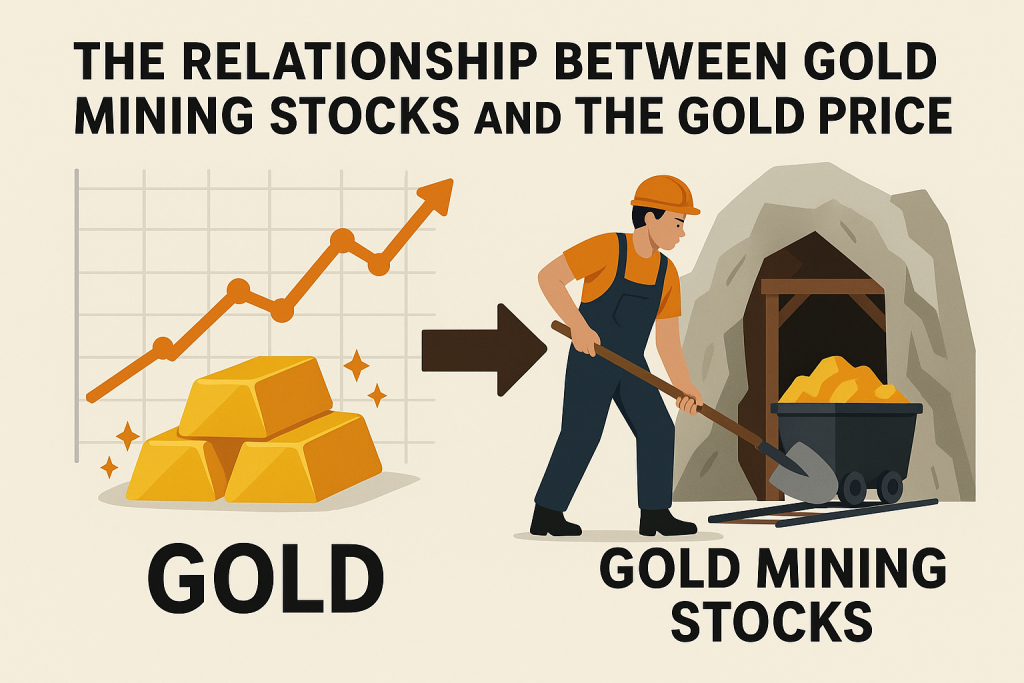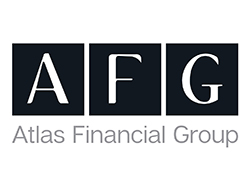
When investors expect gold to rise, a common question follows: “Should I buy gold itself, or gold miners?” The two are related—but not the same. Below is a practical guide to how gold mining shares tend to move with (and sometimes away from) the gold price, why that happens, and what it means for portfolio construction.
1. First principles: bullion ≠ miners
- Bullion (e.g., physical, GLD) is direct exposure to the metal’s price. It doesn’t have management teams, balance sheets, or operating costs.
- Gold miners (e.g., GDX, individual producers) are businesses whose profits depend on the gold price and on costs, geology, financing, regulation, FX, and execution. GDX tracks a broad miners index and is not a pure gold proxy.
2. Why miners can soar when gold rises: operating leverage
Miners’ profits are roughly (gold price – cost per ounce) × ounces. A widely used cost yardstick is All-in Sustaining Cost (AISC). If AISC is US$1,300/oz and gold is US$2,300/oz, margin is US$1,000. A 10% gold move to US$2,530 lifts margin to US$1,230—+23%—before any volume changes. That embedded operating leverage explains why miners often outperform bullion in strong gold upcycles.
The flip side: leverage works both ways—when gold stalls or falls, margins compress faster, and miners can lag.
3. Correlation: linked, but imperfect
Academic and practitioner studies find miners are positively—but not perfectly—correlated with gold. They also carry equity-market sensitivity (they’re listed stocks). One study shows gold-mining stocks have much higher sensitivity to broad equities than to gold itself over long samples; another confirms the positive but time-varying correlation with gold.
Translation: miners are a hybrid of commodity and equity risk. In risk-off phases they can trade like cyclical stocks even if gold is resilient.
4. Why miners sometimes underperform bullion—even in “gold bull markets”
Several structural reasons help explain stretches where miners lag the metal:
- Finite mine lives & replenishment risk: companies must continually replace reserves through exploration/M&A, which consumes capital and introduces execution risk.
- Cost inflation & FX: energy, labor, consumables and local currencies (CAD, AUD, ZAR, etc.) can rise, squeezing margins even if gold is flat/up. (AISC captures much of this.)
- Balance sheet & dilution choices: debt, equity issuance, or poor capital allocation can offset gold’s tailwind; conversely, disciplined capital returns help. Recent coverage notes improving balance sheets and cash returns at major producers.
- Volatility: miners are typically more volatile than bullion; e.g., GDX’s recent 1-yr volatility has been materially higher than GLD’s.
5. Recent cycle context (2024–2025)
Commentary and data over the past year highlight a familiar pattern: gold prices have been strong, but miners’ performance has been mixed, creating periods of “catch-up” or “disconnect.” Some research argues the underperformance reflects structural realities (reserve replacement, risk, volatility); practitioners note that improved capital discipline and cash returns could narrow the gap.
6. Practical takeaways for portfolios
When miners can make sense
- You want torque to the gold price via operating leverage.
- You believe costs are contained (or falling) and FX is supportive.
- You prefer cash-flowing producers with prudent balance sheets and growing dividends/buybacks. Recent coverage suggests more discipline across leading companies.
When bullion may be better
- You’re targeting pure gold exposure as a hedge or diversifier, especially in risk-off regimes where gold’s correlation to equities often turns low/negative.
- You want to avoid idiosyncratic company risk (geology, politics, financing).
- You prefer lower volatility than miners historically deliver.
ETFs and structures
- Bullion ETFs (e.g., GLD): straightforward gold price exposure.
- Miners ETFs (e.g., GDX): diversified basket of producers; still equity risk.
- Royalty/streaming companies (often included in miners indices or bought directly) can offer exposure with lower operating risk, though still equity-linked. Recent investor notes often cite names like Franco-Nevada and Wheaton as examples within the “equity gold” spectrum.
7. A quick decision framework
- Why gold? Hedge/diversifier → start with bullion; Growth/torque → consider miners.
- Where are costs heading? Favor low-AISC, high-quality reserves, and disciplined capital allocation.
- What’s your risk budget? Miners carry higher volatility and equity beta; size positions accordingly
At AFG Wealth, we work with clients in Mauritius, South Africa and Kenya to bring global finances under one roof — providing bespoke, cross-border financial planning that gives confidence, clarity, and direction.
📞 Ready to build your plan? Let’s talk. Contact us today.

